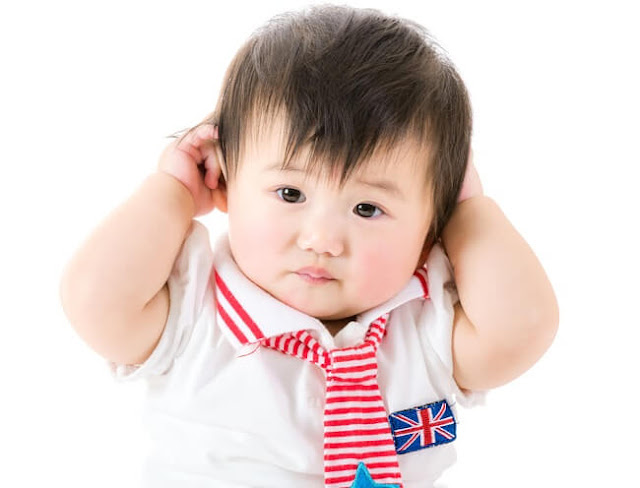Ear disorders are more likely to occur in infants and toddlers, because they have shorter, narrower, and transverse tubes or eustachian tubes than adults. This condition makes them more at risk of fluid buildup.
A disorder in the ear called otitis media occurs when bacteria or viruses enter the middle ear, which is the back of the eardrum. The ear of a child who has an middle ear infection is usually filled with infected fluid or pus and is inflamed, causing pain. Ear infections in children are often caused by germs or viruses that cause strep throat or colds
This is what happens when a child is affected by an ear disorder
An older child can explain the pain and which part. But babies who can't talk may just cry and fuss more often than usual. Therefore, it is important for parents to watch for signs that a child may experience ear disorders. Children who have ear infections generally experience several symptoms such as:- The child complains that his ear hurts. This is because the pus is pressing against the eardrum.
- It's hard to eat and drink because swallowing and chewing causes pain in the ear.
- Insomnia because of feeling sick when lying down.
- Children often pull or hold ears.
- Fever appears, because the child's body is fighting infection.
- Previously had experienced a sinus infection or runny nose.
- Vomiting or diarrhea due to the same bacteria or viruses can also interfere with the digestive tract.
- Children's ears smell bad.
- Leucorrhoea or yellowish discharge from a child's ear. This can occur because of the formation of holes in the eardrum due to inflammation and infection.
- Standing position of the child is not balanced because of interference with the ear also disturbs the balance of the body.
- Children are more difficult to hear sounds due to a buildup of fluid in the ear.
Helping Children More Comfortable When Their Ears Are Sick
Generally, this ear infection can resolve within 2-3 days by itself. But there are times when it lasts longer. To anticipate the possibility, see ways that can be done when the child has a disorder in the ear.- See if your child's condition can improve within 2-3 days without antibiotics. Consumption of too much antibiotics can make germs in the body of children immune to antibiotics.
- The doctor may give antibiotics for severe disorders of the child's ear. Make sure your child takes antibiotics until they are prescribed, and do the re-examination to the doctor some time later.
- Paracetamol or ibuprofen can be used to reduce pain. Avoid giving aspirin to children.
- Ear drops from the doctor or even warm compresses on the child's ears can also help relieve pain.
- Support his head with an extra pillow when he lay down.
- The child should not consume milk from a bottle while sleeping. The study found that the use of pacifiers increased the risk of infection in the middle ear of infants and toddlers.
- Avoid children from around people who smoke. Children who are often in smokers are more at risk of ear infections than those who are not.
- Encourage children to wash their hands regularly to avoid bacteria.
- Pneumococcal vaccine / PCV can help reduce ear infections. The Indonesian Pediatric Association (IDAI) recommends giving this vaccine to children aged 2, 4, and 6 months and then giving a repeat vaccine (booster) when children are 12 to 15 months old.
- Giving exclusive breastfeeding during the first 6 months can help prevent infection.

Comments
Post a Comment